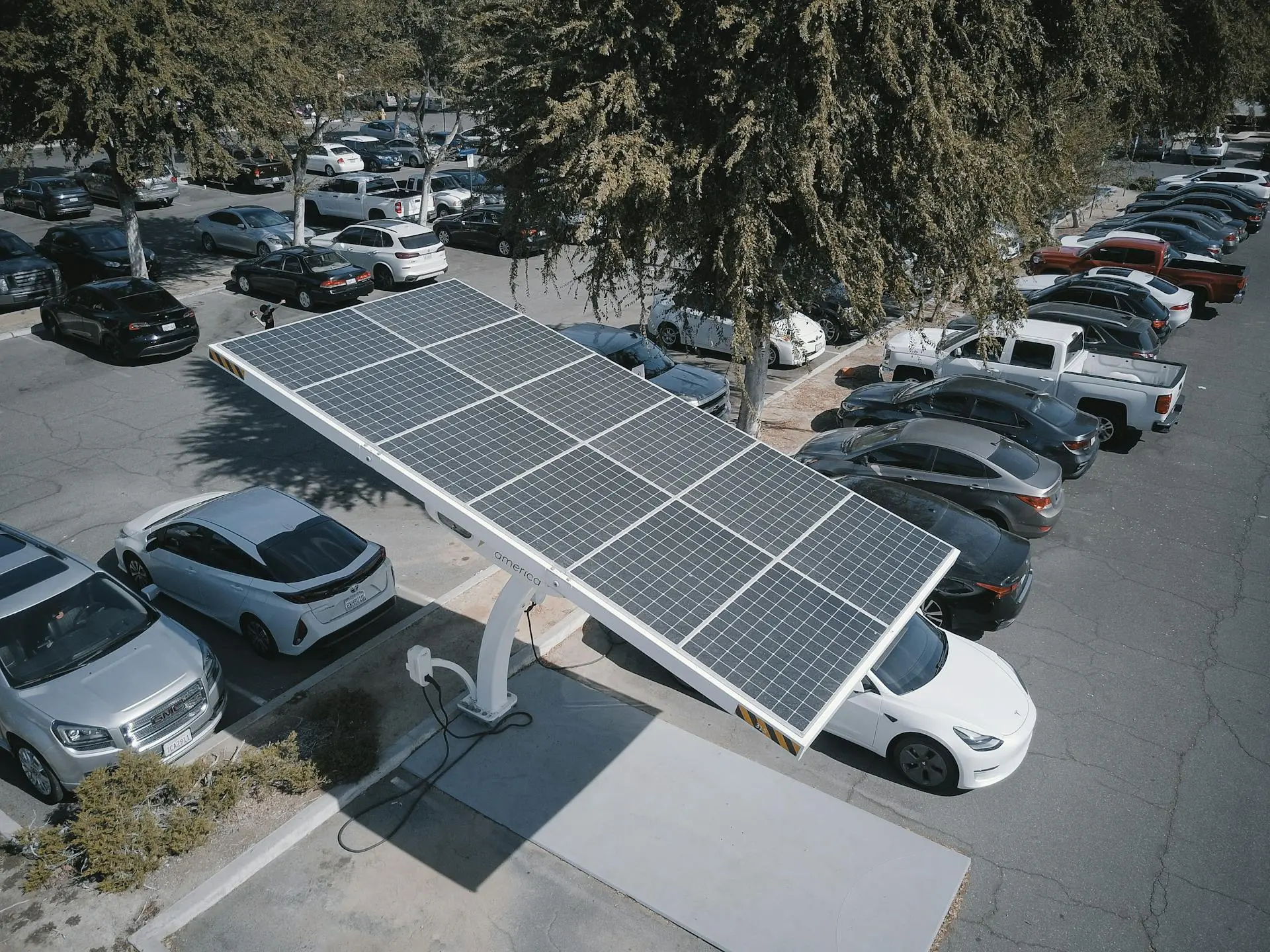Installing solar panels is a smart and sustainable way to reduce your energy bills and minimize your environmental impact. While rooftop solar panels are the most common choice, there are numerous innovative locations around your home where solar panels can be effectively installed. This article explores a variety of creative solar panel installation spots, outlining their unique benefits to help you optimize your solar energy setup.
1. Rooftops
The most popular location for solar panels remains the rooftop, due to its excellent exposure to sunlight. Ideally, a south-facing roof maximizes solar energy capture throughout the day. If you live in sun-rich areas like Charlottesville, Virginia, utilize strategically positioned rooftop panels to increase your energy savings Charlottesville solar panel installation. Modern solar panel technology even allows for installations on different roof types, enhancing efficiency.
Benefits:
- Space Efficiency: Utilizing rooftop space leaves your yard free for other uses.
- Sleek Aesthetic: Properly installed panels can give your home a modern, eco-friendly appearance.
2. Carports and Garages
Carports and garage roofs provide excellent platforms for solar panels, offering dual benefits of protecting your vehicles and generating clean electricity. This setup is especially practical for suburban homes or properties with ample driveway space.
Benefits:
- Vehicle Shade: Shields your car from UV damage and heat buildup.
- Convenient Maintenance: Easier access compared to rooftop systems for repairs or cleaning.
3. Garden Sheds
Installing solar panels on garden sheds can power lighting and tools, offering off-grid energy for your outdoor projects. This often-overlooked option makes efficient use of existing structures.
Benefits:
- Energy Independence: Powers your shed equipment without adding to your home’s electricity load.
- Optimization of Space: Transforms an underutilized area into a functional energy source.
4. Fences
Integrating solar panels into fences is gaining popularity, especially in homes with limited yard area. Solar fences provide both energy generation and increased privacy, while adding a unique design element to your property.
Benefits:
- Privacy and Energy: Combines privacy fencing with solar power generation.
- Customizable Design: Tailor your fence to complement your home’s aesthetic.
5. Solar Pergolas
Solar pergolas enhance your outdoor living area by providing shade and sustainable energy. These stylish structures can be integrated with greenery, creating a relaxing, eco-friendly outdoor space.
Benefits:
- Expanded Outdoor Space: Combines functionality with solar energy generation.
- Visual Appeal: Adds sophistication and beauty to your garden or patio.
6. Patios and Decks
Consider installing solar panels on freestanding structures above patios or decks. This provides much-needed shade while powering your home, perfect for eco-conscious entertaining.
Benefits:
- Comfort and Utility: Offers shaded outdoor spaces alongside clean energy production.
- Custom Design: Adaptable to various outdoor layouts and styles.
7. Driveways
Solar carports or innovative solar pavers installed in driveways combine parking solutions with green energy generation, making efficient use of high-traffic surfaces.
Benefits:
- Cutting-Edge Technology: Solar pavers are a modern way to capture solar energy without sacrificing space.
- Efficient Use of Space: Transforms your driveway into a power source.
8. Pool Areas
Solar panels can be installed to heat your pool or power pool equipment, reducing energy expenses with renewable solutions specifically designed for pool heating.
Benefits:
- Reduced Heating Bills: Solar pool heaters cut down on electricity costs.
- Eco-Friendly Pool Maintenance: Lowers your carbon footprint while maintaining pool comfort.
9. Tiny Homes
Tiny homes benefit greatly from solar panel installations due to limited space and the desire for energy autonomy. Portable and flexible solar solutions cater well to these compact living environments.
Benefits:
- Sustainable Living: Supports low-impact lifestyles with green energy.
- Portability: Many solar systems are designed for mobility, matching the tiny home ethos.
10. Community Solar Gardens
Community solar gardens offer an alternative for homeowners unable to install panels onsite. Members share in the benefits of a larger, centralized solar installation, promoting collective sustainability.
Benefits:
- Cost Sharing: Splits installation and maintenance expenses among multiple participants.
- Community Involvement: Fosters local commitment to renewable energy.
11. Solar Greenhouses
Solar greenhouses blend gardening with energy generation, enabling year-round plant cultivation powered by renewable energy on the rooftop or walls of the structure.
Benefits:
- Reduced Energy Costs: Powers greenhouse systems sustainably.
- Extended Growing Seasons: Solar power supports plant growth through cold seasons.
12. Sound Barriers
In urban settings, sound barriers along highways or railroads can be equipped with solar panels, creating a dual-purpose structure that reduces noise while generating clean energy.
Benefits:
- Multi-Functional Infrastructure: Combines sound reduction with solar power production effectively.
- Innovative Use of Space: Transforms necessary infrastructure into energy-generating assets.
13. Community Buildings
Community buildings such as schools, libraries, and centers are ideal for solar installations, benefiting public resources and serving as educational showcases for renewable energy.
Benefits:
- Educational Impact: Raises awareness about renewable energy in the community.
- Operational Savings: Cuts down energy costs for public services.
14. On Your Roof’s Eaves
Installing solar panels on roof eaves, especially wide overhangs, can offer protection for the panels and capture sunlight effectively, adding to your energy generation without cluttering the main roof.
Benefits:
- Unique Placement: Makes use of often-overlooked roof areas.
- Weather Protection: Shield panels from rain and snow to extend longevity.
15. Vertical Solar Panels
Vertical solar panels mounted on south-facing exterior walls are a great solution for homes with limited roof space, maximizing sunlight exposure and adding architectural interest.
Benefits:
- Maximized Energy Output: Efficiently harness sunlight in constrained areas.
- Visual Enhancement: Creates distinctive, modern exterior designs.
Conclusion
There are numerous innovative places to install solar panels around your property, from traditional rooftops to creative options like pergolas, fences, and community buildings. Taking advantage of these installations not only lowers your utility bills but also supports global efforts toward sustainability.
If you’re based in regions like Richmond, Virginia, exploring Richmond, Virginia solar options can help you maximize your energy savings. Consider investing in a reliable solar battery backup system to store excess power for use during nighttime or cloudy days, enhancing your energy independence.
By adopting a creative approach and smart space utilization, you can fully harness solar power tailored to your home’s specific needs.
Additionally, for those interested in learning more about “Guide to choosing the best inverter for solar panels 2024,” we invite you to explore our “Home Appliances” category for in-depth information and expert tips.
Solar energy technology continues to advance rapidly, making solar panel installations more efficient, affordable, and accessible than ever before. Recent innovations include bifacial panels that capture sunlight from both sides, solar shingles that blend seamlessly with roofing materials, and smart inverters that optimize power output. Integration with home automation systems allows homeowners to monitor and manage their energy consumption in real time. With increasing government incentives and eco-conscious trends, investing in solar solutions delivers long-term financial and environmental benefits, positioning homeowners at the forefront of sustainable living.



